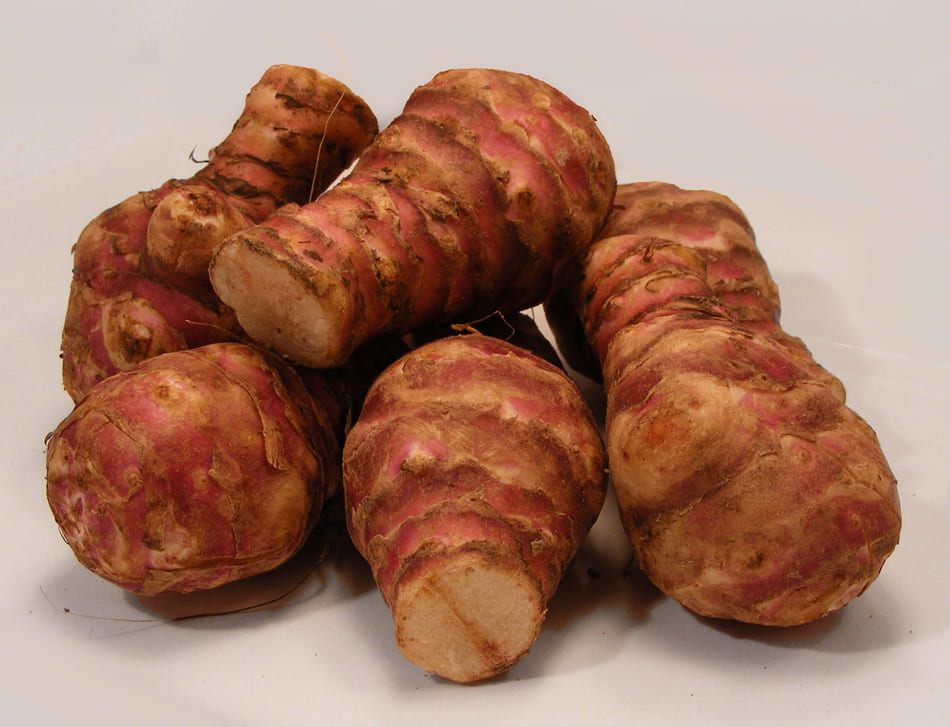Jerusalem artichoke is a sweet nutty tuber, similar to the potato. Find out here what you should consider when buying and storing the exotic-looking tuber and how you can use it in the kitchen.
Interesting facts about Jerusalem artichoke
Jerusalem artichoke (also called tiger artichoke) is closely related to the sunflower. Depending on the variety, the tuber comes in different shapes, sizes, and colors. Their thin shell is light brown to violet. Likewise, the color of the firm pulp varies from white, yellow, brownish, and red to purple, depending on the variety.
Originally from Central and North America, Jerusalem artichokes came to Europe in the 17th century. French emigrants had discovered these in North America and ate them when other foods became scarce. Saved from famine, the emigrants also wanted to tell their old homeland about the “miracle tuber” and sent a few specimens home. In Europe, however, the “tart artichoke” was soon replaced by the potato as a tuber. For a few decades, however, the vegetable has become more popular again. In Germany, traders obtain Jerusalem artichokes primarily from growing areas in France and Israel.
Shopping and cooking tips for Jerusalem artichoke
The Jerusalem artichoke is harvested from October to March and during this time you can get the tubers fresh in the supermarket. However, the root vegetable can only be stored in the refrigerator for about three to four days (unlike the potato), which is why the vegetable is often sold in the shops processed into flour. With this you can bake hearty pancakes or bread.
Handling Jerusalem artichokes is actually very similar to potatoes: you can boil them and serve them as a side dish, for example as Jerusalem artichoke puree. The tuber is also excellent as a main ingredient, for example in a hearty breakfast with Jerusalem artichoke, and you can also use it to prepare a delicious soup. In contrast to the potato, however, it can also be eaten raw, for example, grated in a salad. The tuber tastes slightly bitter raw and similar to an artichoke, but sweet when cooked. For more inspiration on how to use the tuber, take a look at our Jerusalem artichoke recipes.
Incidentally, you do not necessarily have to peel Jerusalem artichokes. The thin shell can be eaten raw or cooked.



